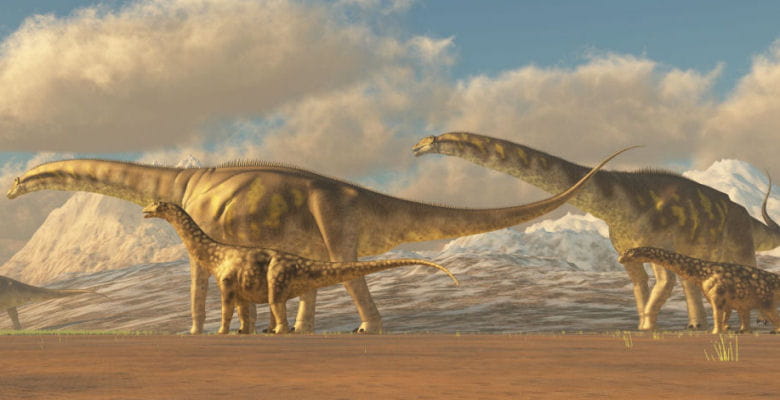Lifestyles of the dinosaurs

Scientists have shown that one of the most complete giant sauropod dinosaurs, Dreadnoughtus, discovered by palaeontologists in South America in 2014, was not as large as previously thought. Found in Patagonia, the huge fossil had almost all of the major bones intact, allowing scientists to confidently estimate its overall size - measuring in at 26 metres long.
Liverpool John Moores University has worked with the University of Liverpool, University of Manchester and Imperial College to estimate the mass of Dreadnoughtus scientists originally used a scaling equation that predicts body mass based on the size of thigh and arm bones. This method produced a range of estimates with the average being a colossal 60 tonnes.
Preserved in rock, it is thought that the animal was close to maturity but not fully grown when it died, and may have grown to be even larger. The long-necked, plant-eating dinosaur was the biggest to ever walk the earth.
Dr Peter Falkingham, co-author of the study, based at LJMU School of Natural Sciences and Psychology:
“Using these established equations to estimate an extinct animal’s mass by measuring the limb bones is really useful when specimens are incomplete – which for dinosaurs can be the majority of finds. But when you have a lot of the animal, it makes sense to try and use as much as possible to gauge how big the thing was, because sometimes, as seems to be the case here, you might just have an animal with really chunky legs!”
The scientists re-evaluated this estimate after it became clear that other sauropod dinosaurs, only marginally smaller than the giant, weighed considerably less than 60 tonnes.
The team used a three-dimensional skeletal modelling technique to examine body mass more directly. This method involves mathematically reconstructing a ’skin’ volume around bones of Dreadnoughtus on a computer and then expanding that skin outline to account for muscle, fat and other tissues.
The size of expanded skin outline is based on similar data from living animals. By exploring a range of expansions the team could more accurately predict how heavy Dreadnoughtus could realistically have been.
The team found that the mass of the Dreadnoughtus was more likely to be between 30 and 40 tonnes, considerably less than originally thought.
It is unclear how accurate previous predictions on the scale of these creatures have been, but future studies of living animals and developments in modelling techniques could help build a more fulsome picture of the size and lifestyles of the dinosaurs.
The research is published in the Royal Society journal Biology Letters.


